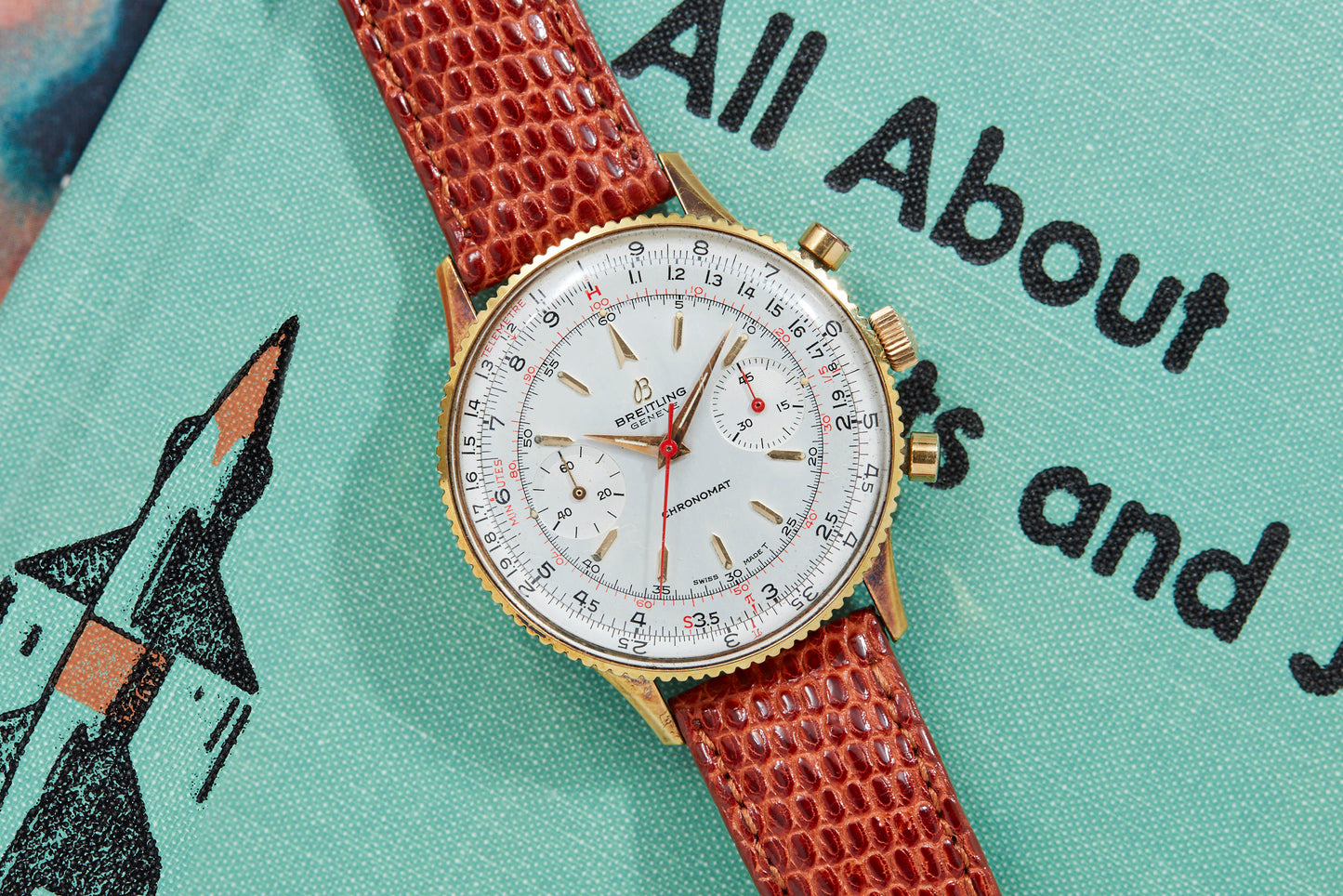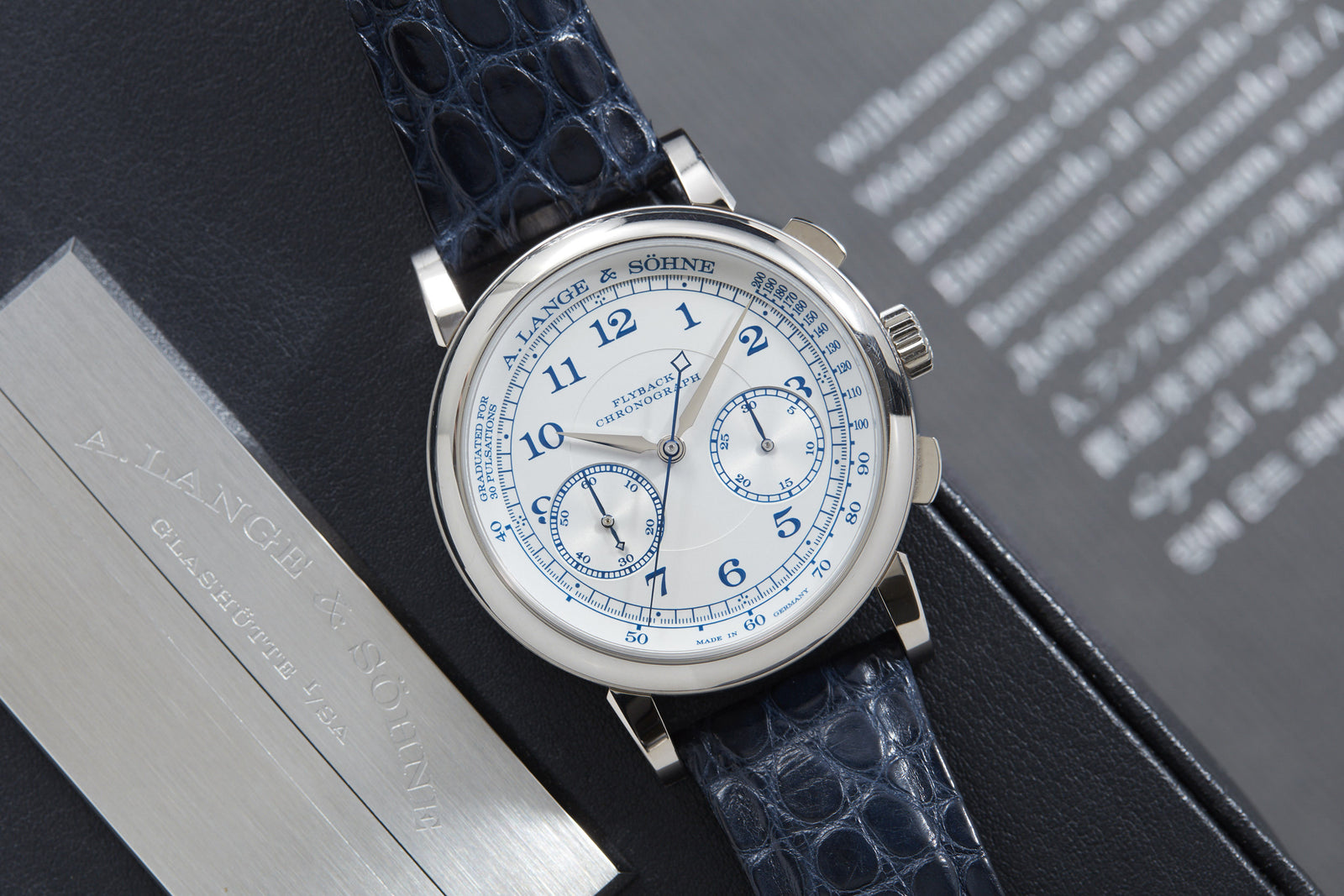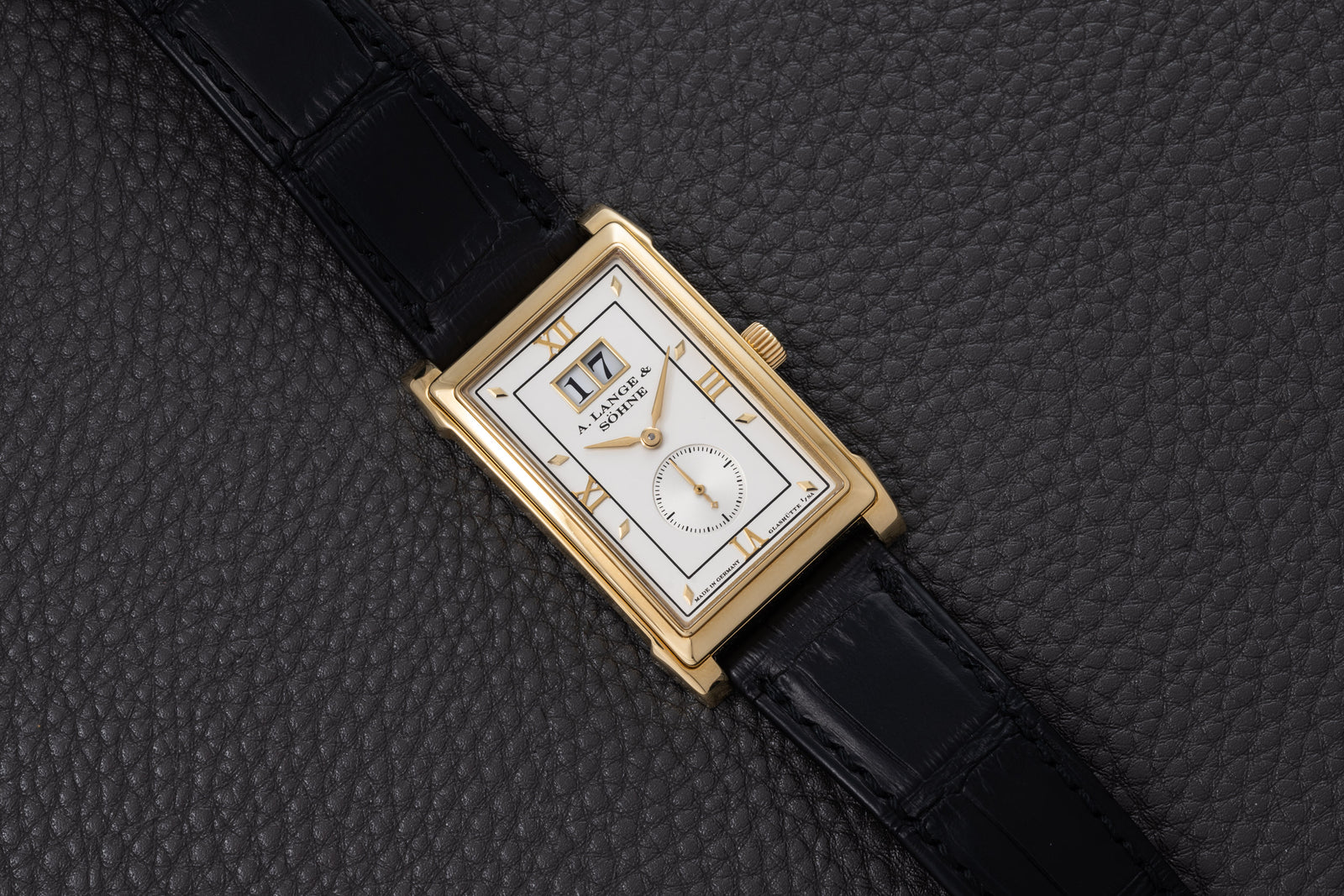Breitling Chronomat
- Soldspan>
- Sold
Why We Love it
–
Why We Love it
–Rotary phones, typewriters, and cathode tube television sets. These are indicative of the time and place in which they were made. Examples litter thrift shops and antique stores, dust-covered artifacts of a bygone era.
Yet they, like the smartphones, computers, and LED television sets of today, represented the height of technological prowess when they were created. And, like the rotary phones, typewriters, and the television sets in their large wooden cases, the phones that we carry in our pockets, the computers that we use, and the LED TVs on which we watch Netflix will all be just as obsolete sometime in the not-so-distant future. It’s a sobering thought, but like all technologies, they will soon go the way of the dodo.
And yet there’s something to be said for the appeal of the analog over the digital. Sure, your smartwatch might become obsolete in a couple of years, and be worth little more than the price of the materials it’s made of. But a manual watch, on the other hand, will remain just as useful—and valuable—as it was when it was created decades ago.
Beyond being handy accessories, certain wristwatches were meant to be tools. They were used for everything, from timing a race to making quick and dirty calculations. And in the realm of calculations, some watches were in fact made with a type of computer—a slide rule.
You might have heard the song “What a Wonderful World”—not the Louis Armstrong one, but the one by the master of soul, Sam Cooke. In it, Cooke croons a list of things he doesn’t know much about, from biology to trigonometry. There’s one verse in particular that sums up our feelings about slide rules: “Don’t know what a slide rule is for.”
Delve a little deeper (or, well, go to the Wikipedia article on slide rules) and you learn that they have multifarious purposes, from simple arithmetic to advanced equations. In fact, a slide rule itself is an example of an old—very old—technology that by rights should have faded out of existence along with the quill pen.
Developed in the 17th century by one Reverend William Oughtred, the slide rule was used by none other than Isaac Newton in his calculations.
It continued to be used throughout history, even by Buzz Aldrin in Apollo 11 (alongside his Omega Speedmaster, one presumes); the model that he carried with him in the mission was sold at auction in 2007.
And in the 1940s, the slide rule migrated to the wrist in a watch created by Breitling—the Chronomat.
The patent that Breitling filed for the Chronomat—number 217012—was for a watch that featured a rotating slide rule on the bezel. The fact that it had a slide rule was by no means unusual, or even unprecedented. Actually, another brand, Mimo, had put out a watch with a slide rule the previous year.
However, the patent filed by Breitling would be unique in that the slide rule would be combined with a chronograph.
Far removed from the spartan chronographs that Breitling and other brands furnished to the world’s militaries, the Chronomat was meant to be used in peaceful pursuits. It was conceived and then promoted as a watch for scientists, engineers, mathematicians. Rather than calculate bomb strikes or troop movements, it was to be used for timing and financial calculations.
By the end of the war, the watch was advertised in a way that would appeal to hard-working men of achievement in the new age that dawned after the dark, war-torn days of the 1940s.
It can be considered as the true origin of the famous Navitimer, which would apply the slide rule to the aviation world, the privileged territory of the manufacture. The circular slide-rule design of the Chronomat has come to be known as the 'Type 42' to differentiate it from the 'Type 52' slide-rule first seen on the Navitimer, the Chronomat’s more warlike brother released in 1952.
This particular Chronomat is a Reference 808. Powered by the Venus 175 movement, its long lugs made it wear larger than its 37mm case would seem. The case is gold-plated, giving the watch a dressy feeling that we simply love.
It’s the perfect watch for the person who, like us, prefers the analog over the digital, or who wants their watches to serve a purpose—everything that the Chronomat does, and more.
A:S Guarantee
+
A:S Guarantee
+Our Pledge
Analog:Shift stands behind the authenticity of our products in perpetuity.
Condition
Since our pieces are vintage or pre-owned, please expect wear & patina from usage and age. Please read each item description and examine all product images.
Warranty
We back each Analog:Shift vintage timepiece with a two-year mechanical warranty from the date of purchase.
International Buyers
Please contact us prior to purchase for additional details on shipping and payment options.
Shipping & Returns
+
Shipping & Returns
+All of our watches include complementary insured shipping within the 50 states.
Most of our products are on hand and will ship directly from our headquarters in New York City. In some cases, watches will be shipped directly from one of our authorized partners.
We generally ship our products via FedEx, fully insured, within 5 business days of purchase. An adult signature is required for receipt of all packages for insurance purposes. Expedited shipping is available at an additional cost. We are also happy to hand deliver your purchase in Manhattan or you may pick it up at our showroom.
Returns must be sent overnight or by priority international delivery, fully insured and paid for by the customer. A restocking fee may apply. Watches must be returned in the same condition as initially shipped.
We welcome international buyers, please contact us prior to purchase for additional details on shipping and payment options.








Breitling Chronomat
- Soldspan>
- Sold







































